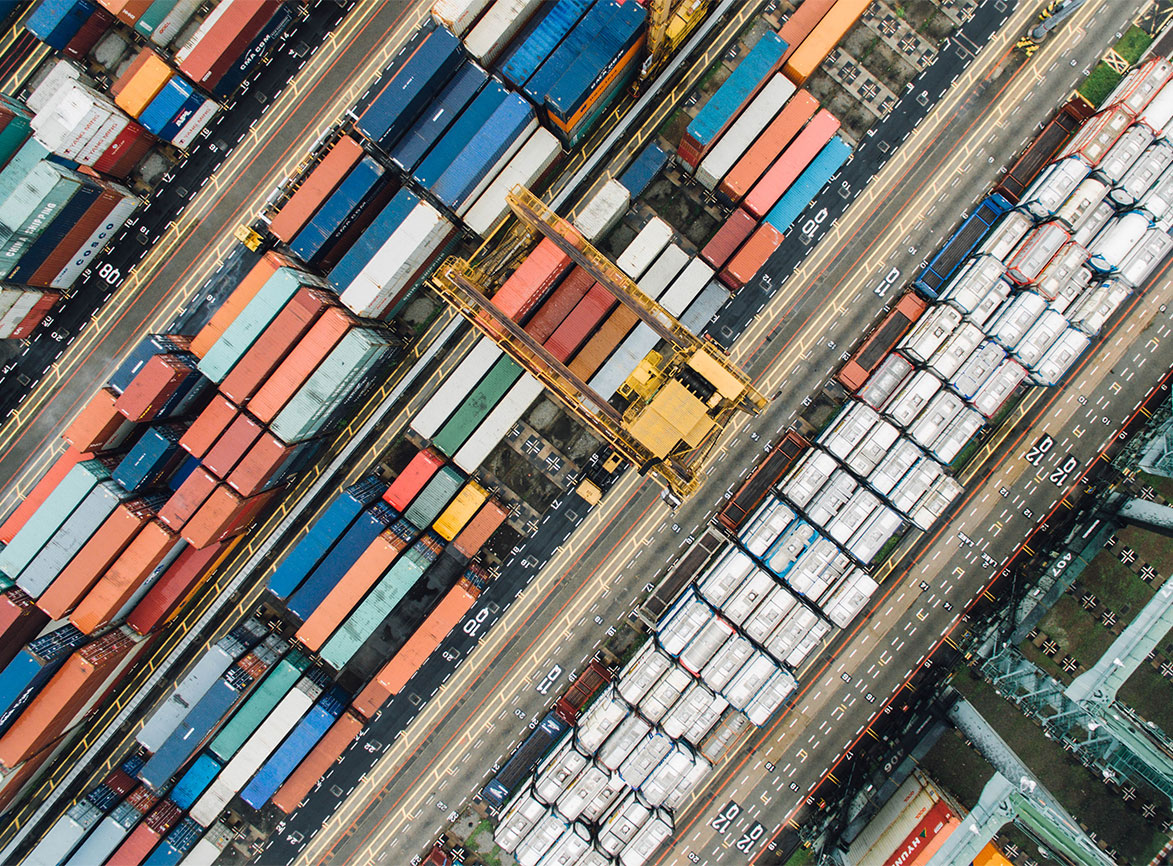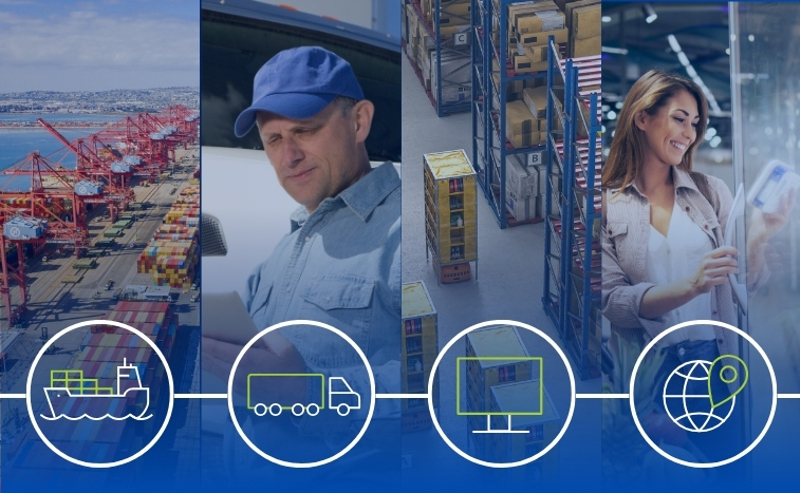International supply chains are complicated. A typical supply chain could involve hundreds of steps and handoffs—from sourcing materials through transport and manufacturing to international shipping and final distribution to retailers.
Although every supply chain is different, there are several types of organizations and areas that are common to the vast majority. We’ll explore what they are, what they do and how they fit into sourcing, transporting, manufacturing or distributing products.
Snapshot of the supply chain ecosystem
Here are the various steps in a supply chain and the organizations involved.
- If a retailer is marketing a specific product and expects there to be substantial consumer interest, they notify their demand planning area.
- Sales and operations planning (S&OP) predicts likely future demand and starts processing orders and determining necessary raw material and manufacturing needs with supply chain management (SCM).
- The orders for raw materials, processing and manufacture are sent to manufacturers.
- A variety of manufacturers receive the raw materials and construct them into the parts needed for the final products; they transfer these parts into intermodal shipping containers.
- An intermodal marketing company (IMC) picks up the containers and uses a network of railway and trucks to transport the materials to a terminal.
- A non-vessel operating common carrier (NVOCC) or freight forwarder uses an ocean transportation provider to transport the goods overseas.
- A logistics service provider (LSP) receives the goods at another terminal and loads them onto trucks leased from an equipment provider.
- A shipper/beneficial cargo owner (BCO) takes receipt of the goods and stores them in its warehouse prior to final distribution to end customers.
- The retailer sources items from the warehouse for its stores as needed to meet consumer demand.
Manufacturer
Alternative and related terms for supplier: producer, processor, refiner, vendor
A manufacturer is an organization that sources, provides or manufactures ingredients, raw materials, parts, finished products or other goods. They then send what they produce to other organizations.
Manufacturers provide goods to downstream supply chain organizations. Those organizations acquire or buy those goods from the manufacturer for onward transport, further manufacture, distribution or sale. A manufacturer will directly hand off goods to a logistics or transport provider that will deliver them to the receiving organization.
Intermodal Marketing Company (IMC)
Alternative and related terms for IMCs: logistics service providers, ship-rail, ship-truck, rail-truck
An intermodal marketing company is a specialized type of logistics provider that exclusively handles intermodal containers like shipping containers. They load and unload shipping containers between ships, trucks and railways and may also transport these intermodal containers to downstream supply chain organizations.
As specialized logistics companies, IMCs are only involved with the supply chain when intermodal containers are used. This means loading and unloading shipping containers, transferring them between different types of transport and moving shipping containers to other organizations in the supply chain.
Terminal
Alternative and related terms for terminals: ports, depots
Terminals, ports and depots are locations where goods are sent, received, handled, processed or otherwise managed for onward logistics. Terminals are commonly used for moving goods from one type of transport to another, often in an intermodal shipping container. One example would be an ocean port where products are transferred from a container ship to trucks for onward transport to warehouses.
Terminals are the critical point for the sending, receiving and handover of goods. LSPs, NVOCCs, BCOs and IMCs all send and receive goods at terminals and depots and then transport them on to downstream organizations or end customers.
Non-Vessel Operating Common Carrier (NVOCC)/Freight Forwarder
Alternative and related terms: forwarders, forwarding agents
A non-vessel operating common carrier administers, manages and organizers the transfer and transportation of ingredients, raw materials, parts and finished products from one place or organization to another. NVOCCs do not move goods themselves but contract with LSPs to move goods on behalf of their client.
NVOCCs typically administer the transport of goods. Although NVOCCs do not own vessels, they will arrange for all necessary documentation and shipping notices. NVOCCs also manage logistics and take care of many of the low-level functions.
Outside the U.S., NVOCCs are known as freight forwarders, forwarders or forwarding agents.
Transportation Provider
Alternative and related terms for transportation providers: LSPs, ocean transport, road transport, rail transport, air transport
A transportation provider physically moves goods from one location or organization to another. They own or lease the transportation infrastructure needed to physically handle and move the goods and may be part of an integrated logistics company, or simply contracted by an NVOCC or LSP.
This includes:
- Ocean transportation providers through transport of shipping containers on container vessels
- Rail transportation providers through transport of goods and intermodal containers across the rail network on specialized locomotives and carriages
- Road transportation providers through trucks that transport shipping containers or other cargo
- Air transportation providers through shipping goods in specialized logistics airplanes
Transport providers are involved whenever goods need to move from one place to another. Even if they are not logistics companies, they will be subcontracted by those organizations for the transfer of products.
Logistics Service Provider (LSP)
Alternative and related terms for LSPs: third-party logistics, warehouses, shippers, distributors
A logistics service provider provides a variety of functions for the sending, receiving, storage, transportation and management of goods as they flow through the supply chain. They are primarily responsible for ensuring that goods get from one point in the supply chain to another.
Different LSPs are involved in several ways at multiple points in any supply chain. An LSP will receive goods from an upstream organization and transport them to a downstream one. They may also be involved in storing and warehousing goods, inventory control, moving containers and goods, packaging, cross docking, freight forwarding and distribution to end customers.
Equipment Providers
Alternative and related terms for equipment providers: truck and trailer providers, intermodal container providers, shipping container providers
An equipment provider manufactures, owns or leases the physical infrastructure and assets needed to transport goods.
Examples include:
- Intermodal container providers that own or lease shipping containers for the secure transfer of goods
- Truck, chassis and trailer providers that own or lease trucks and trailers for road transport
- Rail providers that own or lease locomotives and specialized transport carriages for railway transport
- Other equipment providers like container ship owners or air freight owners
Equipment providers supply transport infrastructure to logistics companies, transport providers, BCOs, IMCs and NVOCCs.
Supplier/Beneficial Cargo Owner (BCO)
Alternative and related terms for BCOs: importers, receivers, retailer
A supplier/beneficial cargo owner is an importer of goods who takes ownership of those goods when they are received. BCOs use their own logistics functions to take receipt, manage and transport goods instead of relying on an LSP or freight forwarder.
BCOs are typically larger organizations with enough capital and resources to have internal logistics functions. BCOs include large retailers (e.g., Amazon, Target, Walmart), consumer packaged goods companies (e.g., Nestle, P&G, Unilever), hi-tech companies (e.g., Microsoft, Apple, HP), automotive companies (e.g., Toyota, Tesla) and other companies, and will receive goods from upstream suppliers, manufacturers and logistics companies. After receiving goods, they will process them or sell them to end customers.
Warehouse and Distribution Center
Alternative and related terms for warehouses: storage, distributors
Warehouses and distribution centers store ingredients, raw materials, parts and finished products. They are responsible for securing goods and storing them in an appropriate environment. Many warehouses also operate as distribution centers, arranging for the transfer and transportation of goods to downstream supply chain organizations or end customers.
Warehouses and distribution centers are intermediaries in the transport of goods from one place to another. They hold products on behalf of suppliers, and supply and distribute them to downstream organizations when the demand is there.
contact us
Contact Us

